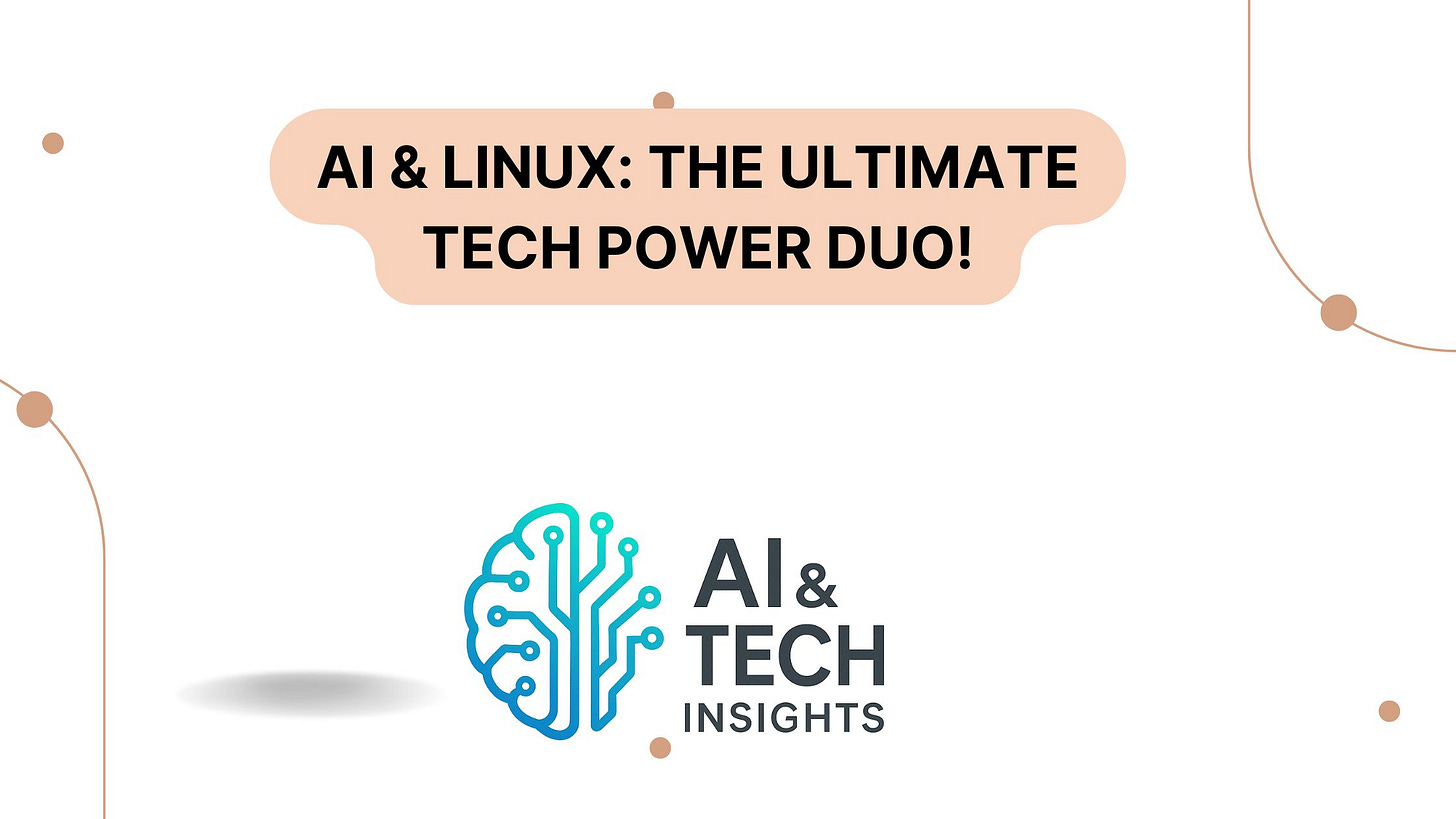👋 Hello, tech enthusiasts and students! Welcome to AI & Tech Insights Newsletter. Today, we’re exploring why AI and Linux are a match made in heaven—and how you can get started using them together. Let’s dive in!
🚀 What Makes Linux Perfect for AI?
Open-Source Freedom 🛠️
Linux is free to use and tweak. No pricey licenses or hidden restrictions—just pure flexibility. Want to customize your system for an AI experiment? Go ahead! You’re in control.Packed with AI Tools 📚
From TensorFlow and PyTorch to scikit-learn and OpenCV, most AI frameworks are built with Linux in mind. Tutorials, guides, and community support almost always assume you’re on Linux, so setup is smoother and help is easy to find.Lean and Mean Performance 🏎️
AI tasks like training models can be CPU- and memory-intensive. Linux runs light, leaving more resources for your AI work. That means faster experiments and fewer crashes.GPU Power-Up 🎮
Need to train deep neural networks? GPUs are your best friends, and Linux plays nicely with GPU drivers (like NVIDIA’s CUDA). You’ll squeeze out extra performance without driver headaches.Scale from Laptop to Cloud ☁️
Start coding on your laptop, then deploy to a cloud cluster—all on Linux. Tools like Docker and Kubernetes were born on Linux, making it a breeze to move your project from one machine to a hundred.Community & Collaboration 🌐
Linux’s huge global community means frequent updates, quick security patches, and tons of tutorials. Stuck on a problem? Someone, somewhere has already solved it and shared the fix.
✨ Real-World AI + Linux in Action
OpenAI’s GPT Models
Ever used ChatGPT? Behind the scenes, Linux machines do the heavy lifting, training massive language models and serving your queries in real time.Google’s AI Services
Google’s voice assistant, image search, and translation services all run on Linux servers. It’s the backbone that keeps billions of requests flowing smoothly every day.Tesla’s Self-Driving Cars
Those on-the-road AI brains in Tesla cars? They run on a Linux-based system, processing camera and sensor data to help vehicles navigate safely.Raspberry Pi Projects
Hobbyist or beginner? A Raspberry Pi running Linux can host small AI experiments—like face recognition or voice commands—right on your desk.
🎓 Why You Should Care
Boost Your Skills: Learning Linux gives you a head start in AI development and makes your resume shine.
Join the Community: Contribute to open-source AI projects or ask questions on forums—Linux makes it easy.
Future-Proof Your Knowledge: With AI and Linux both at the cutting edge, mastering them opens doors in research, startups, and big tech alike.
💡 Quick Tip: If you’re new to Linux, try installing a beginner-friendly distro like Ubuntu or Fedora in a virtual machine. Then install Python and experiment with a simple machine learning tutorial!




